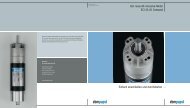DC axial fans 2011 [PDF] - ebm-papst
DC axial fans 2011 [PDF] - ebm-papst
DC axial fans 2011 [PDF] - ebm-papst
- No tags were found...
You also want an ePaper? Increase the reach of your titles
YUMPU automatically turns print PDFs into web optimized ePapers that Google loves.
Optional special versionsInformation on pictogramsOn the pages of the catalogue and on the following overview pages, the pictograms illustrated below provide information about technically possiblespecial versions in the fan line presented.Please note that these special versions are not possible for all voltages and speeds, and not in all combinations.The special versions are designed for specific customers and projects and are not usually available off the shelf.Speed signalThe fan uses a separate wire to output informationabout its speed, and thus about the speed of the rotor.For technical details, please refer to page 110.Go / No-go alarmThe fan uses a separate wire to output a static signalwhen it is stationary, thus providing information aboutwhether or not the rotor is turning. For technicaldetails, please refer to page 117.Alarm with limit speedIf the speed drops below a certain level defined in thefan's electronics, the fan will emit a static signal, thusproviding information about whether or not the rotor isturning. For technical details, please refer to page 114.PWMAPWM control inputThe speed of the fan can be changed via a pulse-widthmodulatedsignal. This signal is applied to a speciallyprovided wire. For technical details, please refer topage 121.Analogue control inputThe speed of the fan can be changed via a control voltage.This control voltage is applied to a specially providedwire. For technical details, please refer to page 121.Multi-option control inputThe fan has a control input that the user can trigger eitherusing a PWM signal, an analogue signal or aresistor. For technical details, please refer to page 122.N GTIExternal temperature sensorAn NTC is connected to the fan via a separate wire andthe fan changes its speed depending on the temperatureat the NTC. For technical details, please refer topage 120.Internal temperature sensorIn this case, the NTC is integrated into the fan and thefan changes its speed depending on the temperature atthe NTC. For technical details, please refer to page120.HPIP54 SPProtection against moistureProtection for the fan's electronics against moisture andcondensation. For technical details, please refer topage 123.IP 54Protection of motor and PCB board against splashedwater and humidity. For technical details, please refer topage 123.Protection against salt spray fogProtection of fan against the damaging effects of saltspray fog. For technical details, please refer to page 123.20


![DC axial fans 2011 [PDF] - ebm-papst](https://img.yumpu.com/48583495/4/500x640/dc-axial-fans-2011-pdf-ebm-papst.jpg)
![AC Axialventilatoren - HyBlade® [PDF] 19,4 MB - ebm-papst](https://img.yumpu.com/50909773/1/184x260/ac-axialventilatoren-hybladear-pdf-194-mb-ebm-papst.jpg?quality=85)

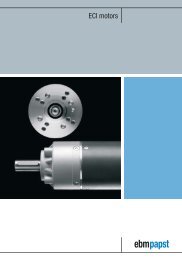
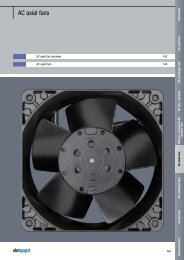
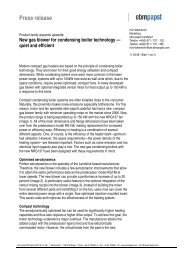
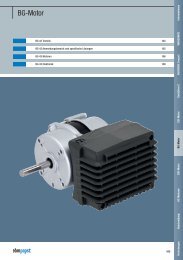
![ACmaxx GreenTech EC-compact fans [PDF] 2.0 MB - ebm-papst](https://img.yumpu.com/50068761/1/184x260/acmaxx-greentech-ec-compact-fans-pdf-20-mb-ebm-papst.jpg?quality=85)
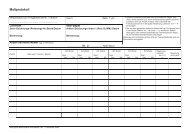
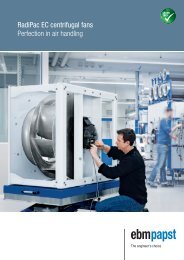
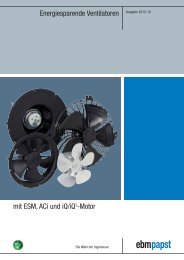

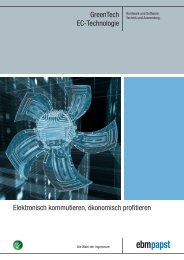
![Download [PDF] - ebm-papst](https://img.yumpu.com/47768780/1/184x260/download-pdf-ebm-papst.jpg?quality=85)
